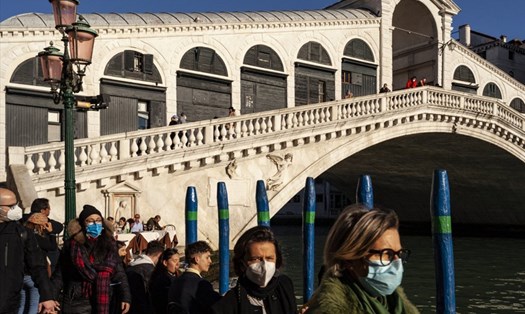This summer, consecutive heat waves have caused many regions of England, France, Austria, Germany... to reach record heights. This was followed by a series of forest fires and droughts that occurred widely in many countries in the region.
Based on annual temperature data recorded from the 18th century to the present, experts warn that this summer could record the worst heat wave in more than 2 centuries in Europe.
The French meteorological agency has issued a warning of temperatures could reach 43 degrees Celsius. At the same time, about 15,000 people have been forced to evacuate due to forest fires in France.
In Spain, where temperatures reach 46 degrees Celsius, people are advised to khong outside during the hot weather, stay in the shade and drink plenty of water.
In Ireland, this summer is expected to record the highest temperature in more than a century. Meanwhile, the forecast temperature in the UK will reach 43 degrees Celsius, much higher than the record temperature in 2019 of 38.7 degrees Celsius.
Due to extreme weather, UK authorities have issued a widespread national emergency notice. In London, Hammersmith Bridge across the Thames River is covered with insulating silver foil by workers to limit the impact of temperatures on the spans.
In addition, people and tourists in the UK are advised to only go outside when absolutely necessary. And to ensure the safety of the people, rail and metro services in London will apply temporary speed limits.
Spain recorded hundreds of deaths from heat, forcing the government to call on people to limit their exposure to heat. At the same time, Spain has banned some outdoor tourism activities such as walking in Barcelona at noon.
At Madrid Zoo, staff help animals cool down by feeding them frozen foods like ice cream. However, some species of reptiles died due to not being able to adapt to too high a temperature, especially those from areas with cold climates all year round. In the coming days, if the weather does not change, the number of animals here is likely to decrease.
In Portugal, more than 235 people have died this month from heat-related causes, and temperatures continue to rise. Forest fires across the region have led to the evacuation of some camping and outdoor recreation areas for tourists that were set aside for the entire summer, causing the tourism industry to fall into chaos.
In Italy, the government has also called for a national emergency along the Po River. Here, the drought is serious, the water level on some sections of the river is so low that people can walk through. In addition, the drought has also led to the closure of decorative fountains in Milan. In southern Italy, the heat caused many forest fires, including some affecting Rome.
In the future, as the impacts of climate change become more severe and severe summer heat waves appear frequently in Europe. Current weather warnings will receive less attention. However, this also shows that the temperate climate of this continent is changing rapidly and posing countless challenges to people.
Not only does it disrupt people's lives, extreme weather also directly affects human health. At the same time, ecosystems and the environment will also be directly affected by temperature and weather. This has caused damage and affected the economy and society, especially the tourism industry.



